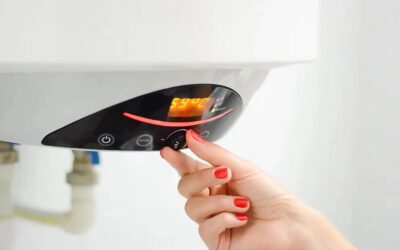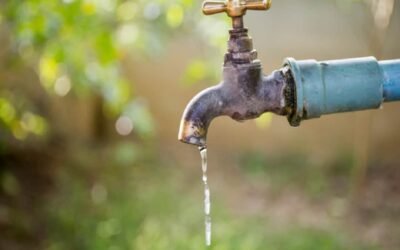There are no hot baths, showers, dishwashers, or washing machines. If you’ve faced frozen pipes within your home, you’ll know how frustrating this can be. It could put a downer on the plans you may have had to plan your day.
But if you’re unsure of the cause, going with the flow is your best action. What happens if you can’t find the frozen pipe within the home’s interior? What happens if the line is difficult to melt without assistance?
Find out below how to locate frozen pipes safely and efficiently and some valuable solutions for your home. If you find that you require the services of an expert plumber, we’ll be able to assist in that as well!
What Is the Cause of Frozen Pipes?
Pipes that are frozen can trigger numerous issues, including the lack of hot water to bathe in and drink and more. The main reason for frozen pipes is that they are constantly cold.
If water is left hanging out in a pipe too long in the snowstorm, it might get left with frozen piping.
The pipes most likely to be stuck between a cold and frosty area are:
- Outdoor pipes
- Lines for crawl and basement spaces
- A tube with no insulation
Do you have these kinds of pipes within your house, and are you in a cold area? If yes, it’s always a good idea to have someone perform periodic checks to ensure they’re in good shape.
What Happens If a Frozen Pipe Explodes?
It’s only the beginning. It is possible to ask, “What happens when an appliance ruptures?”
The Red Cross points out that when the water inside pipes expands too far, it could cause the line to crack, which could be an entirely different issue. It is also much more challenging to resolve because your piping might need to get replaced.
It is not the only problem. A burst pipe could cause water to splash into the ceiling and floor. It could cause significant damage to the floor and cause flooding of your home. Based on the pipe area that burst, the water may also leak from the upper floors into the lower levels.
How to Locate a Frozen Pipe at Your Home
If you believe frozen pipes are in your home, you should know the areas to look for and how to recognize them.
You can believe that you have frozen pipes within the home; as we’ve mentioned, a few possible sources get found on exterior walls. Another concern is any place in your house where the water service enters through the foundation. A tiny drop appears when you switch on the faucet on a cold winter day.
Here are the steps to follow when you suspect you’ve got frozen pipes, starting from locating them and fixing them by getting an expert.
1: Switch on the faucet and then leave that in the “on” or “hot water” position. It will ensure that water is flowing through the pipes so that they eventually melt.
2: Check all possible areas:
- Outdoor pipes
- Plumbing in basements
- Lines inside the crawl space
- All other piping that’s not adequately insulation
3: If you cannot locate the fixed location, the possibility is that it’s within the wall. You’ll need to contact a licensed plumber with the appropriate equipment to find this. Pipes that are behind a wall are significantly more challenging to reach. Making an effort on your own is extremely risky.
4: If you’ve managed to find the frozen pipe, The next step is to determine where the freezing occurred.
5: Once you have located the frozen section inside the pipe, it’s time to defrost it. It can get accomplished using various standard home appliances, including a hair dryer, electric heating pad, space heater, or warmer towels on the pipe.
6: Avoid using these items to melt your pipe: blowtorch or propane heater, kerosene heating or stove for charcoal, or any other open flame. These are highly hazardous.
7: Continue to heat the pipe until the normal pressure of the water has returned.
8: Also, check twice by turning on all the faucets within your home. Each one will show any frozen pipes that may have happened.
These are the most critical steps to locate and defrost an unfrozen pipe within your home. If you cannot find the line by yourself or safely melt it the first time, you must seek a trained and licensed plumber to solve the issue immediately.
How to Prevent Pipes from Freezing
Of course, please prevent them from freezing. Then, you would not have any of these issues!
There are a variety of methods to accomplish this:
- Unlock the cabinets that house the plumbing fixtures in the bathroom and kitchen areas, allowing warmth to move through the air.
- Allow your faucets to drip only a tiny amount of water for a few hours to prevent the possibility of water sitting in pipes.
- Increase the temperature in your home to ensure that pipes are warm.
- Insulate the areas in which piping is get installed.
- Get a professional plumber to examine your pipes before the cold weather regularly.
Following these guidelines will make you less likely to encounter frozen pipe issues shortly.
Don’t Let a Frozen Pipe Stop Your Life
A pipe that is frozen can cause a lot of damage. However, it doesn’t have to be this way. Through regular maintenance and inspections, you can stop this from occurring. If it’s too late and you’ve had a problem with the effects of a ruptured or frozen pipe, give us the number. Ottawa Plumbing Service is here 24/7 and waiting to assist. Contact us right away at (613) 317-1682 or mail at info@ottawaplumbingservaice.com.



